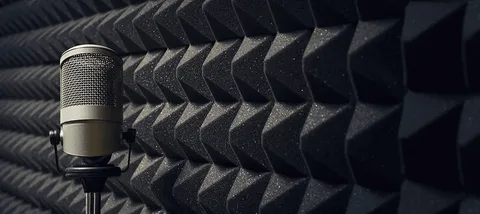If you have a room that has lots of empty space, echoes can become an issue. Fortunately, there are ways to reduce room echoes and improve the overall acoustics in your home or office.
The first place to start is with sound absorption. This helps to soften the sound waves in the room by reducing the number of hard surfaces that reflect them backward.
Cover Hard Surfaces with Sound Absorbing Materials
Sound absorbers reduce the echoes and reverberations produced by hard surfaces such as drywall, hardwood floors, glass, and concrete. This improves acoustics in rooms and helps reduce the noise created by conversations, movies, and music.
Sound absorbing materials also block the reflection of sounds off hard surfaces back into the room. These include acoustic panels, baffles, and stretched fabric systems.
These are typically installed on walls or ceilings to improve the acoustics in a space, but they can also be used INSIDE of a wall or ceiling to improve sound transmission from one room to another.
Acoustic panels are a popular option for improving acoustics in spaces, especially in large halls and rooms that require more acoustic equalization. They are easy to install and come in a variety of colors, shapes, and designs.
Use Ceiling Fans
Ceiling fans are an easy way to improve the sound absorption of air in a room. They can be used in conjunction with other acoustic measures to dampen sounds that are annoying or distracting.
In the luxury or wide room’s location soundproof curtains provide a cooling benefit, which is particularly beneficial in warm weather and in rooms where there are high ceilings. To get the most benefits from a fan, it’s important to choose one that circulates air rather than blowing it.
In addition, fans should be used in conjunction with a thermostat that controls the room’s temperature to make them more energy efficient and environmentally friendly. The fans can be set to rotate clockwise or counter clockwise to control the amount of air that is drawn upward.
They’re easy to install and can be a great addition to any home. They’re especially helpful in bedrooms, where they can reduce echoes and improve the quality of sleep.
Place Furniture With Soft Surfaces
When it comes to acoustics, soft surfaces and the right type of furniture can make all the difference. They help to absorb sound, keep the noise down and reduce echo, among other acoustic benefits.
When deciding on the best furniture for your home or office, choose high-quality designs made from materials that are durable and can stand up to heavy use. These include leather, fabric and upholstered furniture.
You should also opt for a sofa that has a thick, well-made frame and foam. The thickness of this material can have a big impact on how much sound is absorbed.
For those with the money to spare, consider investing in high-quality acoustic fabrics. The right type of fabric can have a profound effect on how a space sounds and can even make it look good, too.
Eliminate Clutter
If you are trying to eliminate echoes in your home or office space, you should look for materials of soundproof curtains that can diffuse sound waves. This can include items like plants, furniture, or even leather couches.
Plants are a great way to reduce echo because they can absorb and reflect sound waves. They also add a classic, timeless look to your home or office.
In addition to scattering and absorbing sound, these types of plants also help increase oxygen levels in your room. This can help you feel more relaxed and calm while working or watching TV.
In epi-optoacoustic imaging, the level of direct and echo clutter is determined by the optical attenuation coefficient of tissue, its absorption coefficient at the tissue surface, and the acoustic echogenicity of the tissue structure. If these properties are accurately mimicked by an epi-optoacoustic phantom, clutter elimination is possible.





